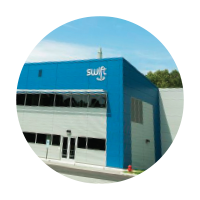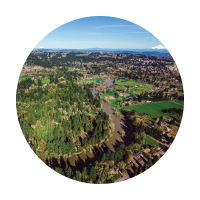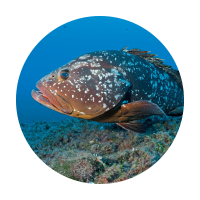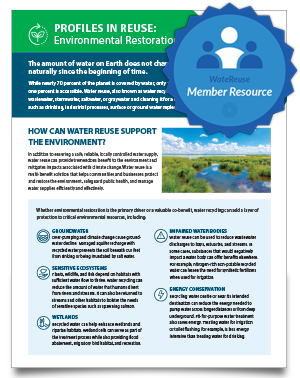Environmental Restoration
How Can Water Reuse Support the Environment?
In addition to ensuring a safe, reliable, locally controlled water supply, water reuse can provide tremendous benefit to the environment and mitigates impacts associated with climate change. Water reuse is a multi-benefit solution that helps communities and businesses protect and restore the environment, safeguard public health, and manage water supplies efficiently and effectively.
Whether environmental restoration is the primary driver or a valuable co-benefit, water recycling can add a layer of protection to critical environmental resources, including:

Groundwater
Over-pumping and climate change cause ground-
water decline. Managed aquifer recharge with recycled water prevents the soil beneath our feet from sinking or being inundated by salt water.

Sensitive Ecosystems
Plants, wildlife, and fish depend on habitats with sufficient water flow to thrive. Water recycling can reduce the amount of water that humans divert from rivers and streams. It can also be returned to streams and other habitats to bolster the needs of sensitive species such as spawning salmon.

Wetlands
Recycled water can help enhance wetlands and riparian habitats. Wetland cells can serve as part of the treatment process while also providing flood abatement, migratory bird habitat, and recreation.

Impaired Water Bodies
Water reuse can be used to reduce wastewater discharges to bays, estuaries, and streams. In some cases, substances that would negatively impact a water body can offer benefits elsewhere. For example, nitrogen-rich non-potable recycled water can lessen the need for synthetic fertilizers when used for irrigation.

Energy Conservation
Recycling water onsite or near its intended destination can reduce the energy needed to pump water across longer distances or from deep underground. Fit-for-purpose water treatment also saves energy. Treating water for irrigation or toilet flushing, for example, is less energy intensive than treating water for drinking.
Recycled Water & The Environment: Coast to Coast
Communities across the United States have developed projects that illustrate the wide variety of environmental benefits provided by water reuse.

Keeping the Ground Up | Virginia
Over-pumping from the Potomac Aquifer is causing the ground to sink in Southeastern Virginia, but water reuse can turn the tide. Hampton Roads Sanitation District’s SWIFT, the Sustainable Water Initiative for Tomorrow, will replenish the aquifer with drinking-quality SWIFT Water™, reducing land subsidence and mitigating flood risk.

Habitat for Birds | Texas
Tarrant Regional Water District’s George
W. Shannon Wetlands Project provides a refuge for more than 260 bird species on the 2000-acre wetland complex. Native plants and soils naturally clean recycled water to provide 90 million gallons of water per day into a water supply reservoir serving the Dallas-Fort Worth region.

Wetter Wetlands and a Cooler River | Oregon
Under the nation’s first watershed-based discharge permit, Clean Water Services uses recycled water to address water quality and temperature requirements for the slow and sensitive Tualatin River. The Thomas Dairy pilot project, a 23-acre former dairy that is predominately a wetland, demonstrates the benefits of water reuse
for environmental restoration.

A Shield Against the Sea | Florida
Hillsborough County uses recycled water to create barriers between salt water and their coastal freshwater aquifer. Since 2015, the effort has resulted in recovery of fresh groundwater storage levels, a halt in saltwater intrusion, and the recovery of Tampa Bay’s seagrass and fisheries.

Reviving the River | Arizona
Since the 1890s, over-pumping of ground-water has caused the Santa Cruz River to dwindle. In 2019, Tucson Water began adding 2.8 million gallons per day of recycled water to an often-dry stretch of river through the city’s busy downtown. The project beautifies Tucson, provides recreation opportunities, maintains wildlife and aquatic habitats, and recharges groundwater resources.

Ecology Drives Efficiency | Georgia
Clayton County’s wetlands filtration system serves to improve water quality, save energy, and reduce maintenance costs of water recycling operations. During Georgia’s historic 2007 drought, the system kept the county’s raw water reserves at 77% and helped the neighboring City of Atlanta through shortages.

